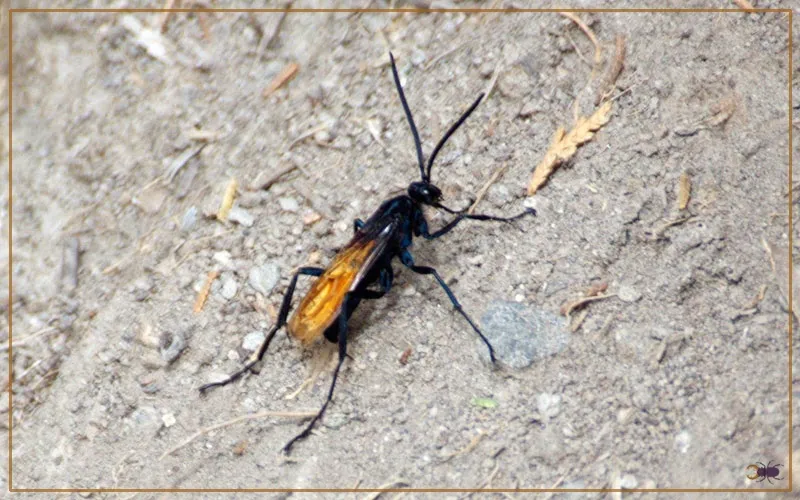Top 5 Facts About Tarantula Hawk Wasp Larvae
The tarantula hawk wasp, a formidable predator of tarantulas, has a fascinating larval stage that’s often overlooked. This stage is crucial for the wasp’s life cycle, turning the tables on the arachnid world. The larvae, which hatch from eggs laid on the paralyzed tarantula, go through a complex development process. Their existence is a testament to nature’s intricate design, highlighting the survival strategies of insects. Understanding these facts helps us appreciate the diversity and complexity of the insect kingdom. Delving into their life cycle is essential to understanding the ecological dynamics of their habitat. This article unveils the top 5 facts, providing insights into their behavior, development, and survival.
What is a Tarantula Hawk Wasp
The tarantula hawk wasp (Pepsis grossa), a member of the Pompilidae family, is a striking insect known for its large size and distinctive coloration. These wasps are among the largest wasps globally, often boasting a vibrant metallic blue-black body and orange wings. They are famous for their hunting prowess and their unique parasitoid lifestyle. Female tarantula hawks are renowned for their painful sting, which they use to paralyze tarantulas before laying an egg on the spider’s abdomen. These wasps are commonly found in arid regions of the Americas, including the southwestern United States. They play a crucial role in controlling the tarantula population, making them an essential part of their ecosystem. Their life cycle is a testament to the wonders of nature, with each stage having a unique purpose.
The Tarantula Hawk Wasp Larva’s Role
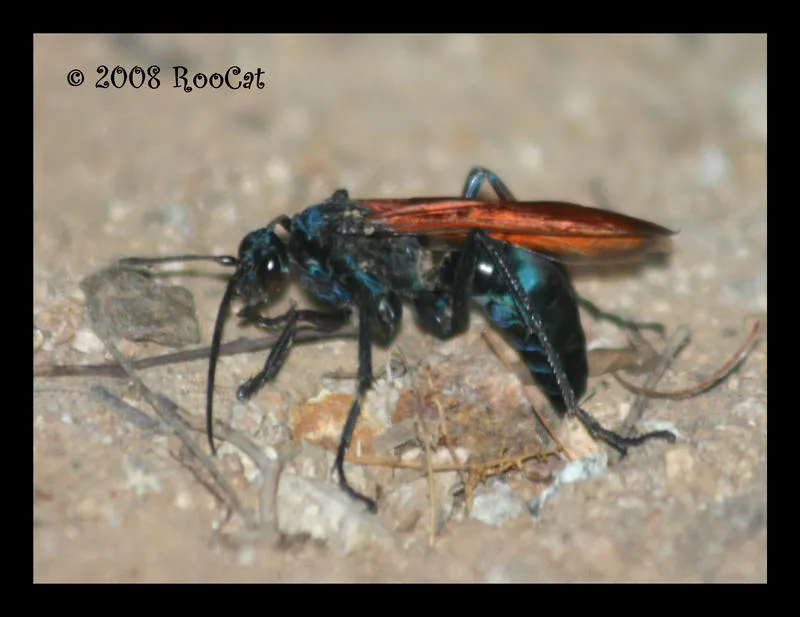
The tarantula hawk wasp larva is a parasitic creature with a specific and essential role in the wasp’s life cycle. These larvae are the offspring of the female wasps, hatched from eggs laid on the body of a paralyzed tarantula. Their primary function is to consume the tarantula, providing the nourishment needed for their development. The larvae’s survival depends on the paralyzed spider remaining alive long enough to sustain their growth. This parasitic relationship showcases an extraordinary example of predator-prey dynamics. Understanding their role provides crucial insights into ecological balance and insect behavior. The larvae’s specific behavior and development are intricately linked to their survival and the wasp’s ultimate ability to reproduce. This parasitic approach emphasizes nature’s resourcefulness and evolutionary adaptations.
Fact 1 The Diet of a Larva
The diet of a tarantula hawk wasp larva is exclusively tarantula. Once the egg hatches, the larva begins feeding on the paralyzed spider. Initially, the larva consumes non-vital parts of the tarantula to keep the spider alive for as long as possible. As the larva grows, it consumes more of the tarantula, eventually devouring the entire spider. This is a slow but methodical process. The larva’s ability to feed on the tarantula is a key survival adaptation. This specific diet provides the necessary nutrients for the larva’s development, including proteins and essential compounds. This specialized feeding habit highlights the unique relationship between the wasp and the tarantula, defining their ecological niche. This ensures the larva’s survival until it pupates and transforms into an adult wasp.
Fact 2 Development Process
The development process of the tarantula hawk wasp larva is a fascinating journey through several stages. After hatching from the egg laid on the tarantula, the larva begins feeding. As it grows, it molts several times, shedding its exoskeleton to accommodate its expanding body. The larval stage can last for several weeks or even months, depending on environmental conditions. During this time, the larva consumes the tarantula, growing significantly in size. Eventually, the larva spins a cocoon, inside which it pupates. The pupal stage is a transformative period where the larva undergoes metamorphosis, reorganizing its body to become an adult wasp. This entire process is a delicate balance of growth and adaptation. The development stages are essential for the survival and success of the species.
Fact 3 Defense Mechanisms
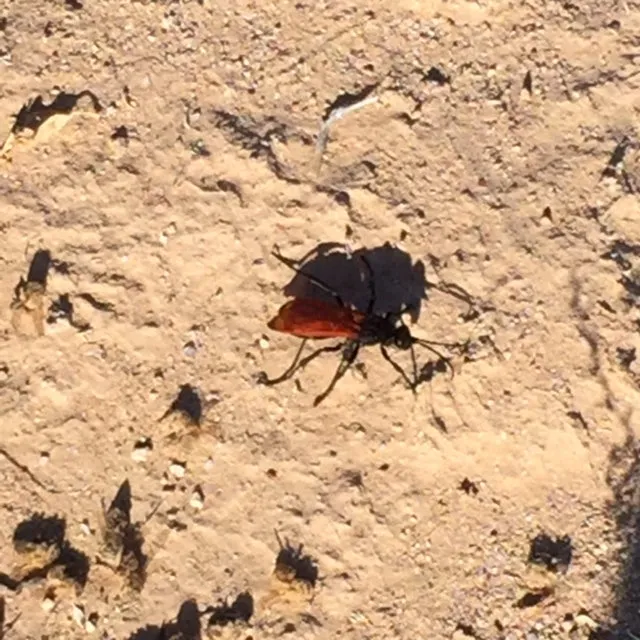
The tarantula hawk wasp larva does not have many active defense mechanisms in the traditional sense. Its primary defense is its location. The larva is hidden within the paralyzed tarantula, providing a degree of protection from predators. The tarantula itself also serves as a protective barrier. The larva’s survival depends on its ability to remain hidden and protected until it is ready to pupate. The cocoon provides further protection during the pupal stage. However, they primarily rely on their environment for protection. Although they are vulnerable, their parasitic lifestyle and strategic location within the tarantula provide a significant survival advantage.
Fact 4 Habitat and Location
Tarantula hawk wasp larvae are found in the same habitat as their host tarantulas. This typically includes arid and semi-arid regions, such as deserts and grasslands. The larvae are dependent on the presence of tarantulas, as the spiders are their sole food source. They are frequently found in the southwestern United States, parts of South America, and other regions where tarantulas thrive. The specific location within the habitat varies, depending on the tarantula’s burrow or hiding place. They will typically be found where their tarantula hosts are. The wasp larvae’s survival depends on the availability of tarantulas and a suitable environment for the spiders to live. They are usually well-hidden in the tarantula’s habitat, and their presence is often a sign of a healthy ecosystem.
Fact 5 Survival Strategies
Tarantula hawk wasp larvae have several survival strategies. Their parasitoid lifestyle is the most crucial. Laying an egg on the paralyzed tarantula ensures a ready food source. The larva’s ability to consume the spider slowly, while ensuring its survival, is also key. The cocoon provides protection during the pupal stage. The selection of the right habitat also plays a significant role. Finally, the timing of their life cycle is critical. They often synchronize their development with the availability of tarantulas. These strategies enhance their chances of survival and contribute to the species’ success. This remarkable adaptation to their environment highlights the complexity of their survival.
How Tarantula Hawk Wasp Larvae Develop
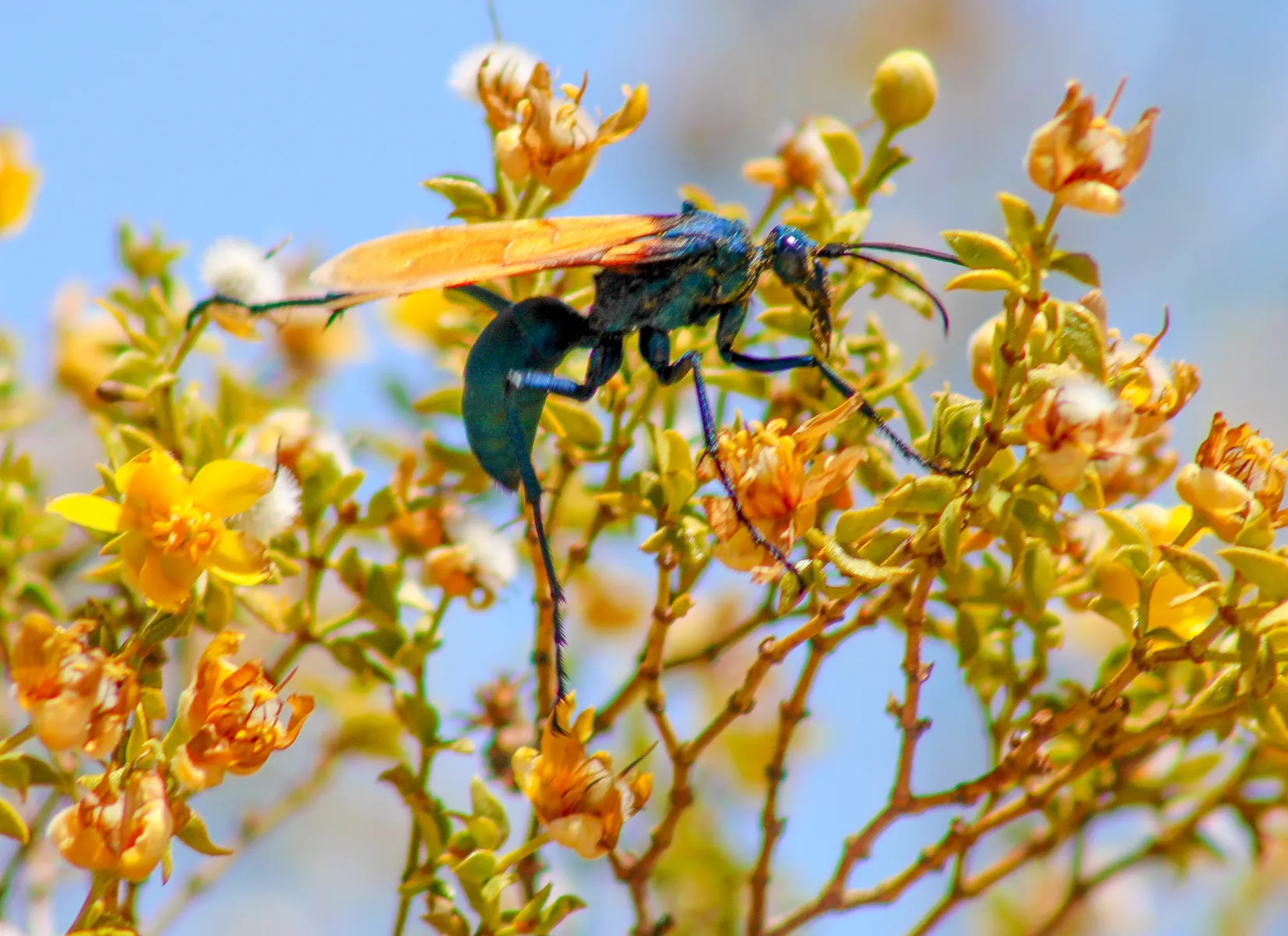
Egg to Larva Transformation
The transformation from egg to larva is the initial phase of their development. The female tarantula hawk wasp carefully chooses a tarantula, paralyzing it with her sting. She then lays a single egg on the tarantula’s abdomen. The egg is small and oval, and it attaches securely to the spider’s body. Once the egg hatches, the larva emerges, initiating the next phase of development. The process of laying and hatching the egg is the start of the wasp’s parasitoid lifecycle. This delicate process sets the stage for the larva’s survival and ensures the perpetuation of the species. The egg itself is a marvel of adaptation, ready to initiate a parasitic life within its host.
Larval Stage
The larval stage is a period of significant growth and feeding. The larva, immediately after hatching, begins feeding on the paralyzed tarantula. It consumes the spider’s non-vital parts, ensuring the spider stays alive as long as possible to maximize its food source. As it grows, the larva molts several times, shedding its exoskeleton to accommodate its increasing size. During this time, it continues to consume the tarantula, gradually devouring the entire spider. The larval stage can last for several weeks or months, depending on environmental conditions. This stage is crucial for the larva’s development, allowing it to store nutrients needed for the next stage. The larval stage is characterized by constant growth and adaptation.
Pupation Process
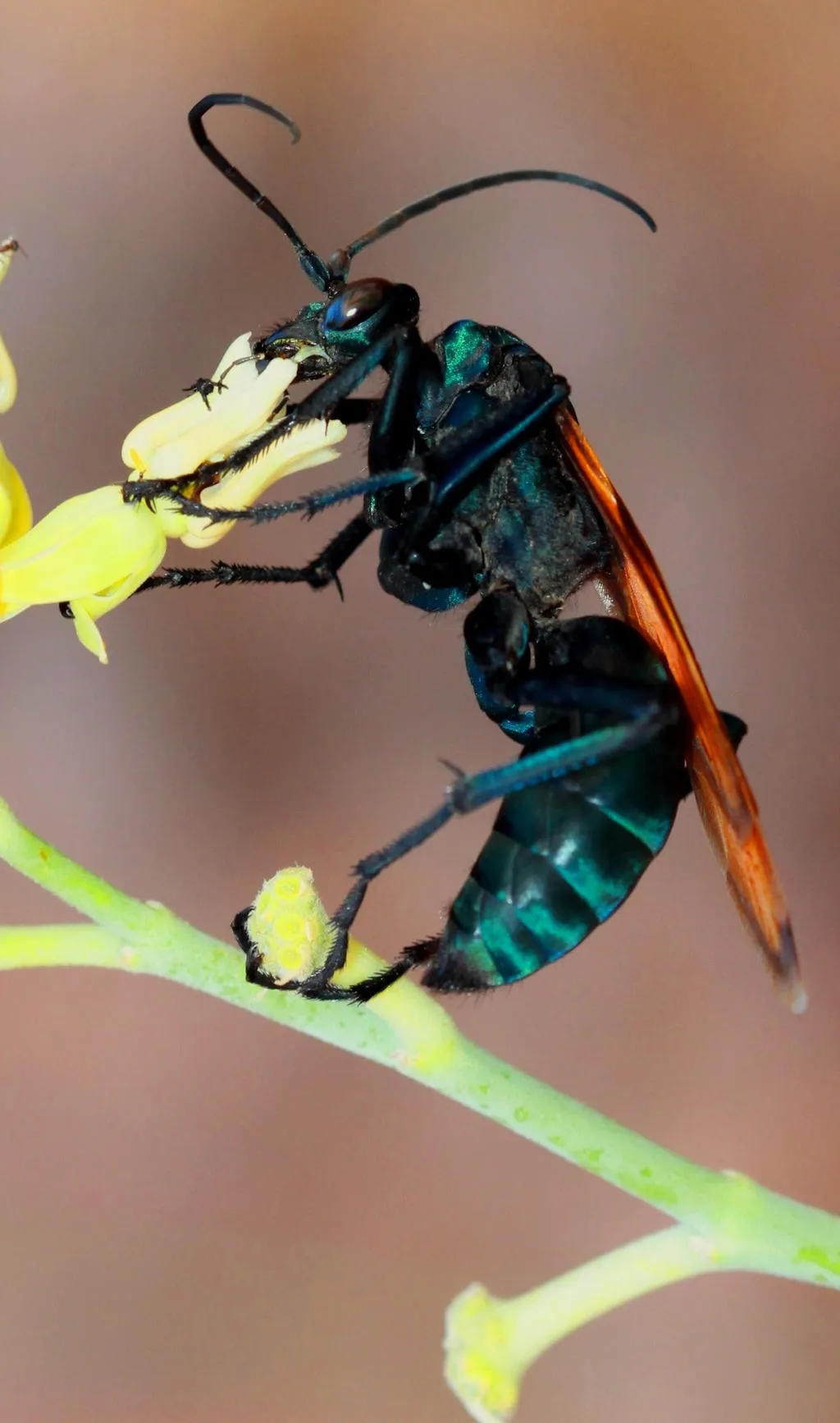
The pupation process is a critical transformation period. After completing the larval stage, the larva spins a cocoon, which provides protection during its metamorphosis. Inside the cocoon, the larva undergoes profound changes, reorganizing its body to become an adult wasp. This process involves the breakdown of larval tissues and the development of adult structures, such as wings, legs, and reproductive organs. The pupal stage can last several weeks or even months, depending on the climate. This transformation prepares the insect for its adult life, equipping it with the necessary features for survival and reproduction. The pupal stage is a testament to nature’s efficiency, converting a larva into a complex, fully-formed adult wasp.
Emergence as an Adult Wasp
The emergence of the adult tarantula hawk wasp marks the culmination of its life cycle. Once the metamorphosis is complete, the adult wasp chews its way out of the cocoon. The newly emerged wasp is fully formed and ready to begin its adult life, with wings, legs, and the necessary features for hunting and reproduction. The adult wasp’s primary goals include finding a mate, reproducing, and perpetuating the cycle. The adult wasp is now ready to hunt and continue the cycle. The emergence of the adult wasp signifies the start of a new generation and the continuation of its species. This whole transformation underlines the remarkable life cycle and adaptability of this fascinating creature.
Threats and Predators of Tarantula Hawk Wasp Larvae
Common Predators
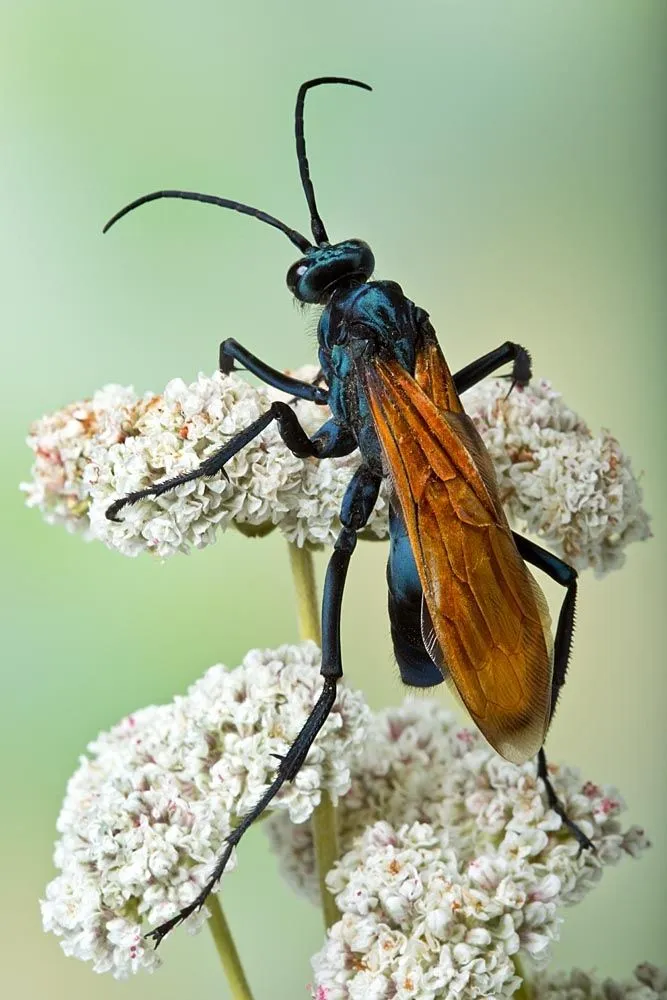
The tarantula hawk wasp larvae face various threats and predators. While they are somewhat protected within the tarantula, certain predators can still pose a risk. These can include larger insects, birds, and other animals that might prey on the tarantula itself. Other parasitic insects may also target the larvae. The exact predators depend on the specific habitat and the species present. Their vulnerability makes them susceptible to attack during their development. The larvae’s defenses are limited, and their survival depends heavily on their location and on the host spider. The constant threat of predation creates a natural selection pressure, pushing the larvae toward more effective survival strategies.
Environmental Threats
In addition to predators, tarantula hawk wasp larvae are also vulnerable to various environmental threats. Extreme weather conditions, such as droughts, floods, and heat waves, can impact their survival. Climate change also poses a significant risk, disrupting the ecological balance. Habitat destruction, due to human activities like deforestation and urbanization, can reduce the availability of tarantulas and, consequently, the larvae’s food source. Pollution and the use of pesticides can also harm the larvae. The survival of the larvae depends greatly on their environment. These environmental factors can disrupt the delicate balance of their life cycle. Protecting their environment is therefore critical.
In conclusion, the tarantula hawk wasp larva is a fascinating example of adaptation, parasitism, and survival in nature. From their diet of tarantulas to their development and the threats they face, their life cycle highlights nature’s complexity. Understanding these facts offers deeper insights into the ecosystem. The tarantula hawk wasp larva’s journey is a testament to the wonder of the natural world, and conservation efforts are vital to ensure this species thrives. It is a reminder of nature’s intricate balance and the importance of protecting these creatures.
